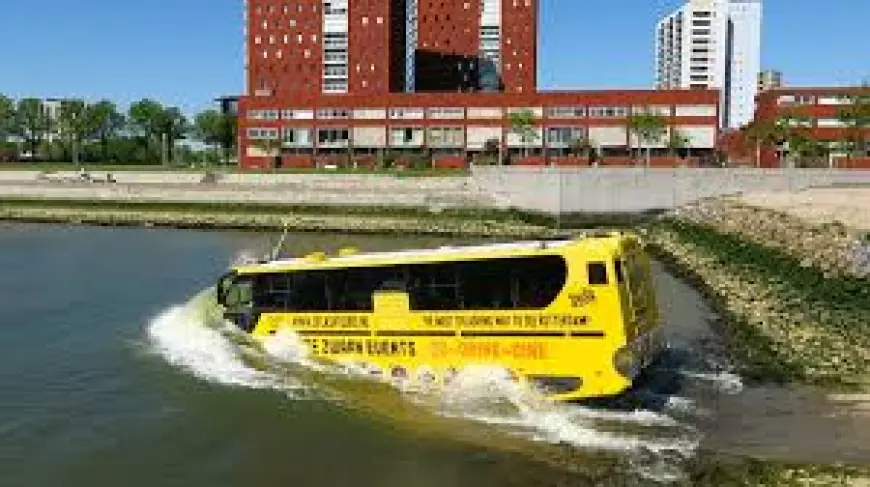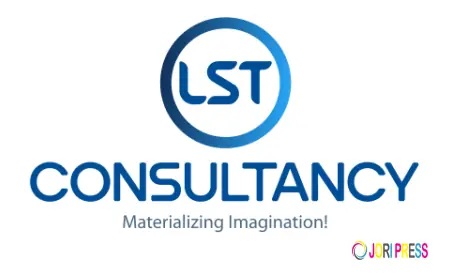Water Bus Market 2030F Eco-Friendly Transport Growth Path
Growth drivers in the market include rising environmental concerns and the adoption of green transportation solutions.

Market Overview
The Global Water Bus Market has been steadily gaining momentum as urban centers worldwide explore sustainable, efficient, and innovative transportation alternatives. Valued at USD 1.3 billion in 2024, the market is projected to reach USD 1.8 billion by 2030, expanding at a CAGR of 5.71% during the forecast period.
Water buses—passenger ferries operating on rivers, canals, and coastal routes—are no longer viewed as niche transit systems. Instead, they are becoming an integral part of urban mobility planning, particularly in coastal and riverfront cities facing road congestion, environmental concerns, and the need for diversified transport modes.
Their appeal lies in their dual advantage: reducing road congestion while providing an eco-friendly alternative to traditional land-based transport. Advancements in propulsion technology, including fully electric and hybrid systems, are making water buses not only greener but also more efficient and cost-effective to operate.
Industry Key Highlights
- Market Size 2024: USD 1.3 Billion
- Forecast 2030: USD 1.8 Billion
- CAGR (2024-2030): 5.71%
- Key Growth Drivers: Sustainability goals, urban congestion reduction, technological advancements in propulsion
- Top Growth Region: Asia-Pacific due to rapid urbanization and policy support
- Primary Propulsion Types: Fully Electric, Fuel-Powered, Hybrid Electric
- Major Challenges: Infrastructure development costs, regulatory hurdles, high initial investments
- Key End Users: Intercity and intra-city passenger services, tourism operators
- Notable Market Players: Damen Shipyards Group, Beneteau Group, Princess Cruise Lines, Ferretti S.P.A, Sunseeker International
- Emerging Opportunities: Electric and hybrid vessel adoption, smart ticketing systems, tourism-driven routes
Download Free Sample Report: https://www.techsciresearch.com/sample-report.aspx?cid=27405
Market Segmentation
The water bus market can be segmented across propulsion type, capacity, operation, and region.
By Propulsion
- Fully Electric – Powered entirely by rechargeable batteries, these vessels offer zero direct emissions and minimal noise pollution, making them ideal for cities with strict environmental policies. They also require lower maintenance compared to combustion engines, though their operational range can be a limiting factor.
- Fuel-Powered – Traditional combustion engine-powered buses remain a staple for long-distance and high-capacity routes, especially in areas with existing fuel infrastructure. Modern designs are improving efficiency and lowering emissions, but environmental concerns remain a drawback.
- Hybrid Electric – Combining fuel engines with electric motors, hybrids offer operational flexibility, switching between power sources depending on route requirements. This provides the efficiency of electric propulsion without compromising range.
By Capacity
- Less than 25 Passengers – Suited for short intra-city routes and tourist operations.
- 25-50 Passengers – Common for mid-sized urban networks.
- Above 75 Passengers – Designed for high-capacity routes and intercity services.
By Operation
- Intra-City – Short trips within urban areas, often linking districts or neighborhoods via waterways.
- Intercity – Longer routes connecting separate cities or major hubs.
Emerging Trends in the Global Water Bus Market
- Electrification of Water Transport
Fully electric water buses are rapidly gaining traction as battery technology advances. Cities like Stockholm and Amsterdam are piloting all-electric ferry fleets, aiming for 100% zero-emission operations by the next decade. - Integration with Smart City Mobility Networks
Water buses are increasingly being linked with digital ticketing systems, multimodal apps, and real-time passenger information platforms, allowing seamless integration with buses, metros, and bike-sharing systems. - Tourism-Oriented Water Bus Services
In many regions, tourism is a major revenue driver. Operators are designing vessels with panoramic decks, luxury seating, and onboard amenities to attract both commuters and leisure travelers. - Sustainable Infrastructure Development
Investment is not limited to vessels—cities are building green terminals with solar charging stations, floating docks, and automated boarding systems. - Hybrid and Hydrogen Fuel Innovations
Beyond battery-electric systems, research is focusing on hydrogen-powered vessels for longer routes, offering the benefits of zero emissions with greater range.
Key Market Drivers
- Urban Congestion and Road Traffic Reduction
With urban road networks under strain, water buses offer a parallel transit system that bypasses traffic entirely, helping cities meet commuter demand without costly road expansions. - Environmental and Regulatory Pressures
Global agreements to cut emissions, such as the Paris Climate Accord, are pushing municipalities toward greener transport modes, directly benefiting electric and hybrid water buses. - Growing Coastal and Riverfront Populations
Population density along waterways is increasing, particularly in Asia-Pacific, creating natural demand for water-based public transport. - Government Funding and Incentives
Public-private partnerships, subsidies for green vessels, and investment in maritime infrastructure are accelerating market adoption. - Technological Advancements
Improved battery density, energy-efficient hull designs, and smart navigation systems are making water buses more competitive with land-based transit.
Regional Outlook
Asia-Pacific
Expected to be the fastest-growing region through 2030, driven by rapid urbanization, environmental policy mandates, and the availability of extensive waterway networks. Countries like India, China, and Indonesia are investing heavily in maritime transport infrastructure.
Europe
Already home to well-established water bus networks, Europe is focusing on full electrification and upgrading older fleets to meet stringent emissions regulations.
North America
Growing adoption in cities like New York, San Francisco, and Vancouver, with a strong emphasis on integrating water buses into broader commuter networks.
Middle East & Africa
Emerging markets are exploring water buses for both tourism and urban mobility, particularly in coastal hubs.
Competitive Analysis
The global water bus market is moderately consolidated, with a mix of large shipbuilders and specialized ferry manufacturers.
Key Players Include:
- Damen Shipyards Group – Known for modular ferry designs and strong after-sales service.
- Beneteau Group – Offers high-quality passenger vessels with innovative propulsion solutions.
- Princess Cruise Lines, Ltd. – Leveraging tourism-focused vessel design.
- Ferretti S.P.A & Azimut Benetti S.p.A – Strong in luxury passenger ferry markets.
- Sunseeker International – Specializes in high-end water transport vessels.
These players are investing in R&D for green propulsion systems, expanding regional production facilities, and forming partnerships with local authorities to secure long-term contracts.
Future Outlook
Looking ahead to 2030, the water bus market is poised for sustained growth. The most significant transformation will likely come from full electrification, as battery technology matures and charging infrastructure becomes widespread.
Urban planners are increasingly recognizing water buses as a strategic solution to urban mobility challenges, particularly in megacities where land-based infrastructure cannot keep pace with population growth.
Coupled with AI-based navigation, autonomous vessel trials, and integration with smart ticketing systems, the next generation of water buses will be cleaner, faster, and more connected than ever before.
10 Benefits of the Research Report
- Detailed market size estimates and growth forecasts through 2030.
- Comprehensive segmentation by propulsion, capacity, operation, and region.
- In-depth analysis of emerging trends shaping the water bus industry.
- Identification of key growth drivers and challenges.
- Competitive landscape profiling leading market players.
- Insights into regional market dynamics and opportunities.
- Evaluation of technological advancements in propulsion systems.
- Strategic recommendations for market entry and expansion.
- Assessment of government policies impacting market growth.
- Data-driven insights to support investment and business planning.
Contact Us-
Mr. Ken Mathews
708 Third Avenue,
Manhattan, NY,
New York – 10017
Tel: +1-646-360-1656
Email: [email protected]
Website: www.techsciresearch.com
What's Your Reaction?
 Like
0
Like
0
 Dislike
0
Dislike
0
 Love
0
Love
0
 Funny
0
Funny
0
 Angry
0
Angry
0
 Sad
0
Sad
0
 Wow
0
Wow
0


















































